The summer in the Lake District National Park is a recurring pressure point marked clearly on the calendars by residents and the authorities. The warmer months present many social tensions as more visitors surge its narrow roads, small towns and villages, tired footpaths, and fragile waters. These pressures are also present at Windermere, housing many conflicting user groups, such as day-hire boats, ferries, kayaks, paddleboards, yachts, and speedboats, alongside significantly more swimmers, dippers, and bathers.
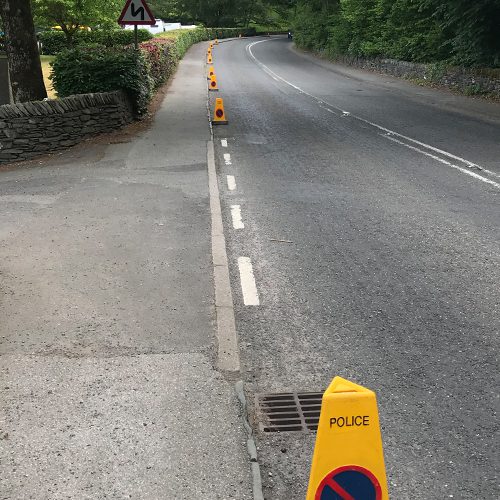
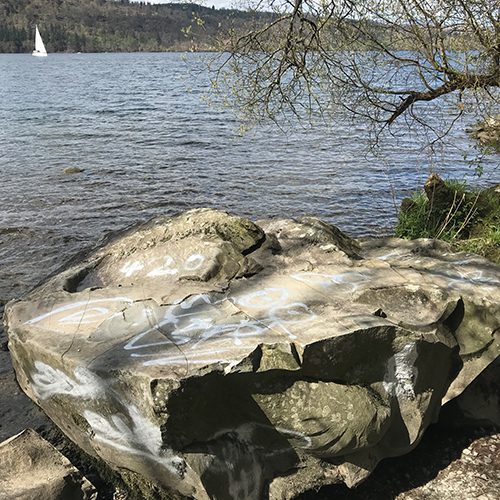
Since immersing myself within the swim communities at the Rayrigg Meadow and Millerground designated public bathing sites over the past ten months, talk of the summer seems to receive mixed responses from regulars.
Some swimmers are excited by the warmer water temperatures and extra daylight, affording further distance and time in the water. From May-September, the ‘official’ bathing season [1], there are also more large-scale swim events, including the Great North Swim [2] and other supported end-to-end (and side-to-side) swims. However, some keen winter dippers express missing the ‘bite’ or ‘fix’ of the cold waters, often making a beeline for the higher tarns and rivers during the summer months.
Whilst July has arrived with rainfall, the UK experienced three weeks of intensely dry and hot weather between May and June [3], presenting drought in many of our local freshwater sites. Water levels appear lower at Windermere, plus its waters have become comparable to a lukewarm bath for accustomed full-season swimmers with surface temperatures close to 21°C.
Although concerned about the heat, I have enjoyed briefly turning my back on the full-body shivers and post-swim spotty-dog warm-ups. I have experienced comfort in revisiting Buoy 14, a green floating barrel often decorated by bird droppings, and located approximately three hundred metres off the shores of Rayrigg Meadow.
Buoy 14 is sometimes seen by regulars as a landmark for those building up their swim confidence, often performed and supported by a multi-coloured mighty-duck-like formation of pink, orange, and yellow tow floats. Although, for many, this distance is unfavoured. Most users stay close to the shore, while some users prefer to bathe. Noticeably, wetsuits become rarer during the summer, plus many users ditch their neoprene socks and gloves. Crocs, flip-flops, and water shoes are still common sightings, helping users navigate the shoreline.
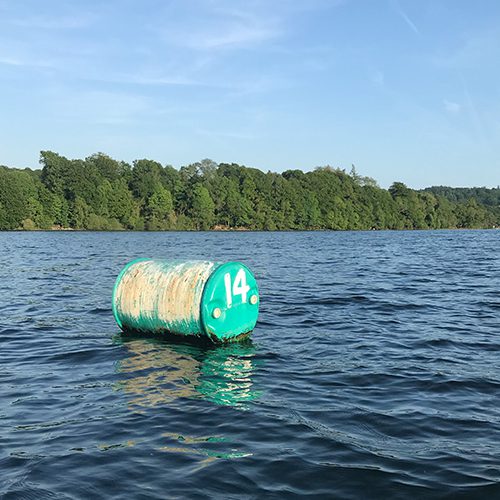
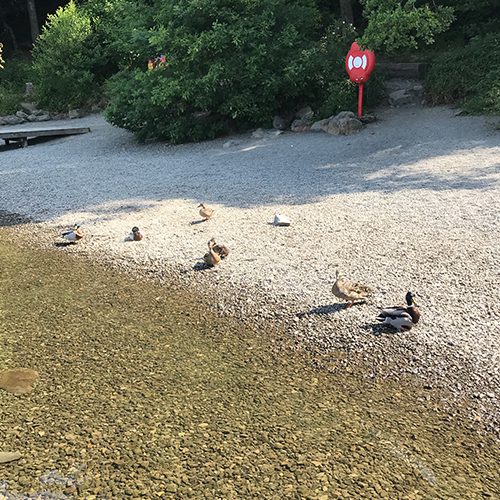
During the summer, the free layby at Millerground and the council-paid car park at Rayrigg Meadow can often be full. Some users park their cars on the pavements, sometimes causing obstructions, or nab a space on Birthwaite Road.
Although public transport timetables have increased for the summer, and single bus fares were reduced nationwide [4], local busses and trains continually experience disruption, making private vehicles typically feel a more accessible form of travel.
During my observations, many regulars calculate their visit to avoid the busy spells, while day visitors and tourists typically stay longer at these sites. There are still times when these bathing sites can feel calm, even bleak at times, yet this feeling soon changes during busier waves, with hundreds of users often stretched along the shorelines.
Those staying for the day will understandably need to carry sustenance. Unfortunately, this can pressurise the waste management at these sites, a troubling spectacle demonstrating further cracks in our local and national infrastructures [5].
The bins on-site readily fill up, overflow, and attract a landing spot during the day and overnight. Common culprit materials include plastic food packaging, cans, glass, disposable BBQs, vapes, cigarette butts, nappies, dog poo bags, sodden towels, forgotten underwear, burst inflatables, and camping equipment.
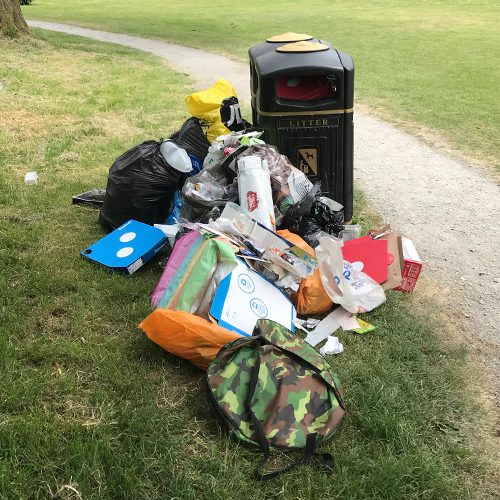
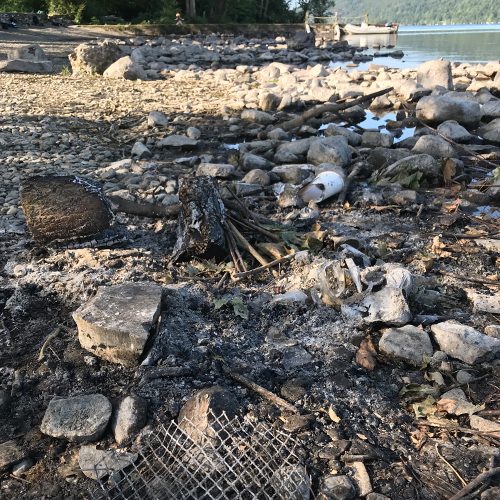
These culprit materials can frustrate regular users when scattered across the shoreline. There is further frustration, for example, when paired with the sight of snapped branches, spray-painted trees, and fire remnants.
Tensions are likely intensified while battling various swarms of midges and horseflies during dusk and dawn, nevertheless, some regulars suggest these sites become ‘spoilt’ by those not following entrenched countryside codes. Many point fingers at those disrupting an idyllic ‘untouched’ visual aesthetic, whilst the potential more-than-human impacts of these culprit materials are rarely discussed.
Some regulars acknowledge these pressures are part of sharing a public site, considering most of the shorelines on Windermere are private, plus recognise the summer brings more users without regular access or similarly shared ‘values’ within these freshwater spaces.
During my observations and conversations, the Westmorland and Furness Council waste management team and a few National Trust employees make daily visits in the summer to keep ‘on top’ of these culprit materials. Unfortunately, there have also been reports of major woodland fires caused by wild campers elsewhere at Windermere [6] and other parts of the Lake District [7].
Some individual users and recreational swim groups call for the council to provide more bins and for individuals to carry their items back out, while others will lead litter picks, planting the ‘leave no trace’ and ‘leave it better’ flags firmly into the centre of their practice.
However, there is often little mention of the responsibilities of manufacturers producing these troubling material culprits (including swimming and paddle sports brands) [8], plus our government regulating the management of these materials [9].
Of course, Windermere still experiences quiet patches during the summer. Early arrivals (before 08:00 am) will typically encounter the shore with the sounds of other sleepy dippers, intermittent calls from mallards and Canada geese, alongside the distant swimmer’s hands lapping the water. But it has been interesting to observe how this atmosphere can dramatically change, and how conflicting sounds from different users can sometimes generate tension and hypocrisy. For example, some regular swimmers have expressed irritation from music emitting from portable Bluetooth speakers and the drones of motorised boats. Yet, the bi-monthly folk group performance on Sunday mornings, alongside the thundering vibrations of military aircraft flying over, typically receives awe and applause.
These unregulated sites, particularly in the evenings, can also experience other social conflicts, including intoxicated users, generating additional risks surrounding swim safety. These can be anxious moments for regulars (and visitors), raising apprehension about the potential of an accident waiting to happen, or encountering hostility when attempting to ‘step in’.
Local outdoor swim coaches often provide swim safety courses, including vital first aid training. Plus, there have been both local and national efforts to encourage swim safety [10], including as part of the school curriculum [11]. There is a defibrillator at Rayrigg Meadow car park (near the public toilets), and throw rings on the shorelines at Rayrigg Meadow and Millerground. I also understand some regulars have called out the local authorities to provide more police presence, particularly in preparation for busier days and evenings.
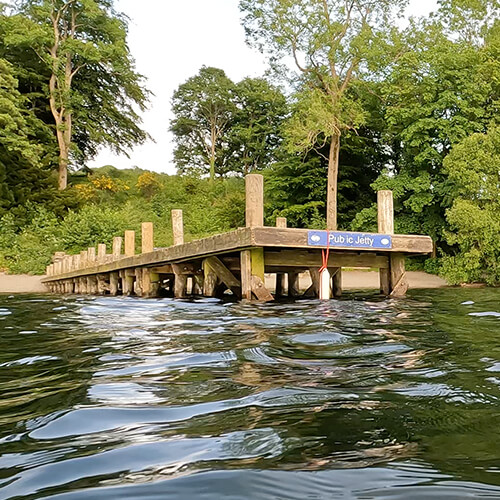
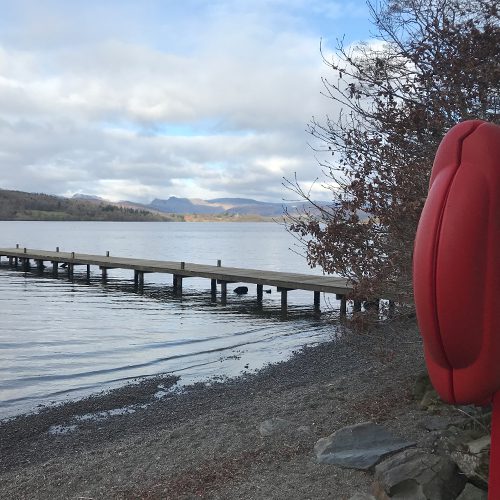
As the temperatures rise, more users (including regulars) brave a jump, dive, or belly flop into the water, often performing for their peers. Some attempt to swim further distances, sometimes unaware of the safety that can be afforded by a brightly coloured tow float and swim cap. Swimming further is considered extra risky, particularly when encountering boat traffic, sometimes navigating boat users unfamiliar with the presence of swimmers.
While many of the regular swimmers I have spoken to have not witnessed a major accident at Windermere, many still anticipate the risks and can feel nervous when observing newcomers and visitors.
Regular swimming groups and coaches will advocate for continually assessing our bodily needs, our access/exit points, swimming within our limits, alongside swim buddies, and wearing a bright swim cap and a tow float if swimming distance. Some swimmers attach a whistle, write their address details on their tow float, and stuff their phones and keys in another waterproof pouch or drybag inside.
The Royal Life Saving Society [12], Outdoor Swimmer magazine [13], and the Outdoor Swimming Society [14] have also produced resourceful swim safety guidelines.
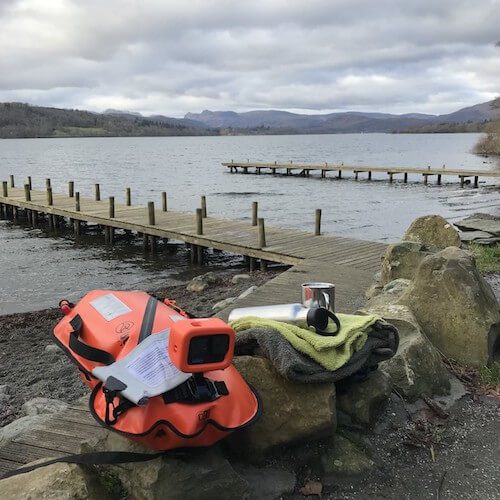
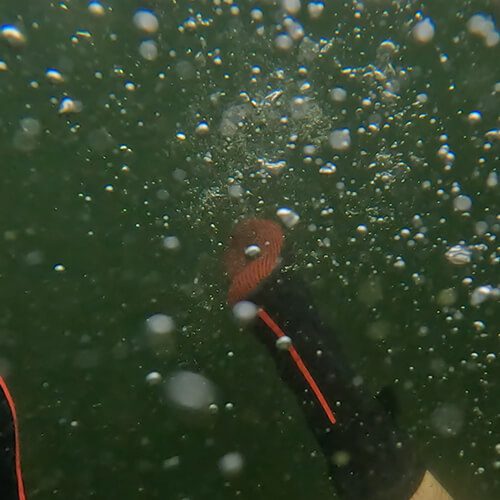
If you have stayed close to the local and national headlines lately, you will also likely have heard of increasing concerns about blue-green algae and sewage pollution at this iconic body of water. However, I have chosen to write a separate blog post about these environmental tensions, which I hope to publish later this month. As you might imagine, it’s lengthy.
In the meantime, keep looking out for yourselves and others, particularly those new to swimming in open waters. After all, we all share different abilities, motivations, histories, and experiences during each of our swims. Differences that I continue trying to soak up.
The fieldwork continues until early September 2023, so there is plenty of time left to get involved. If you fancy reflecting on your practice alongside concerns at Windermere, get in touch and we can organise a conversation on the shore or as part of a swim-along interview.
References
[1] Environment Agency. (2023). Swimfo: Find a bathing water. [online]. Department for Environment, Food & Rural Affairs (DEFRA). Available at: <environment.data.gov.uk/bwq/profiles> [Accessed: 3 Jul 2023].
[2] Arla Great North Swim. (2023). Great North Swim, Windermere. Available at: <www.greatswim.org/great-north-swim> [Accessed: 3 Jul 2023].
[3] Met Office. (2023). Climate change impacts June temperature records. (July 3). Available at: <www.metoffice.gov.uk/about-us/press-office/news/weather-and-climate/2023/fingerprints-of-climate-change-on-june-temperature-records> [Accessed: 3 Jul 2023].
[4] Department of Transport (UK GOV). (2023). £2 bus fare cap. (1 Jul). Available at: <www.gov.uk/guidance/2-bus-fare-cap> [Accessed: 3 Jul 2023].
[5] Hawkins, G. (2006). The ethics of waste: How we relate to rubbish. Lanham, MD: Rowman & Littlefield Publishers.
[6] Barber, I. (2023). Warning as firefighters tackle major blaze on lake Windermere island. (17 Jun). The Mail. Available at: <www.nwemail.co.uk/news/23596316.warning-firefighters-tackle-major-blaze-lake-windermere-island> [Accessed: 3 Jul 2023].
[7] BBC News. (2023). Cumbria: Warning over ‘massive rise’ in disposable barbecue fires. (17 Jun). BBC. Available at: <www.bbc.co.uk/news/uk-england-cumbria-65876688> [Accessed: 3 Jul 2023].
[8] Evers, C. (2019). Polluted leisure. Leisure Sciences, 41(5), 423–440.
[9] Liboiron, M., Tironi, M., Calvillo, N. (2018). Toxic Politics: Acting in a Permanently Polluted World. Social Studies of Science, 48(3): 331-349.
[10] Swim Safe. (2023). About Swim Safe. Available at: <www.swimsafe.org.uk/about> [Accessed: 3 Jul 2023].
[11] Royal Life Saving Society UK. (2023). Water Safety (Curriculum) Bill. (23 May). Available at: <www.rlss.org.uk/water-safety-curriculum-bill> [Accessed: 3 Jul 2023].
[12] Royal Life Saving Society UK. (2023). Water Safety Advice. Available at: <www.rlss.org.uk/Pages/Category/water-safety-information> [Accessed: 3 Jul 2023].
[13] Outdoor Swimmer. (2019). Outdoor Swimming Safety and Risk Assessment. (27 May). Available at: <www.outdoorswimmer.com/featured/outdoor-swimming-safety-and-risk-assessment> [Accessed: 3 Jul 2023].
[14] Outdoor Swimming Society. (2023). OSS top 10 tips for safe summer swimming. (5 Jun). Available at: <www.outdoorswimmingsociety.com/10-tips-for-summer-swim-safety> [Accessed: 3 Jul 2023].
Author: Taylor Butler-Eldridge | Published: 3 July 2023
Blog
Keep up to date with the blog posts and updates from the research project.
